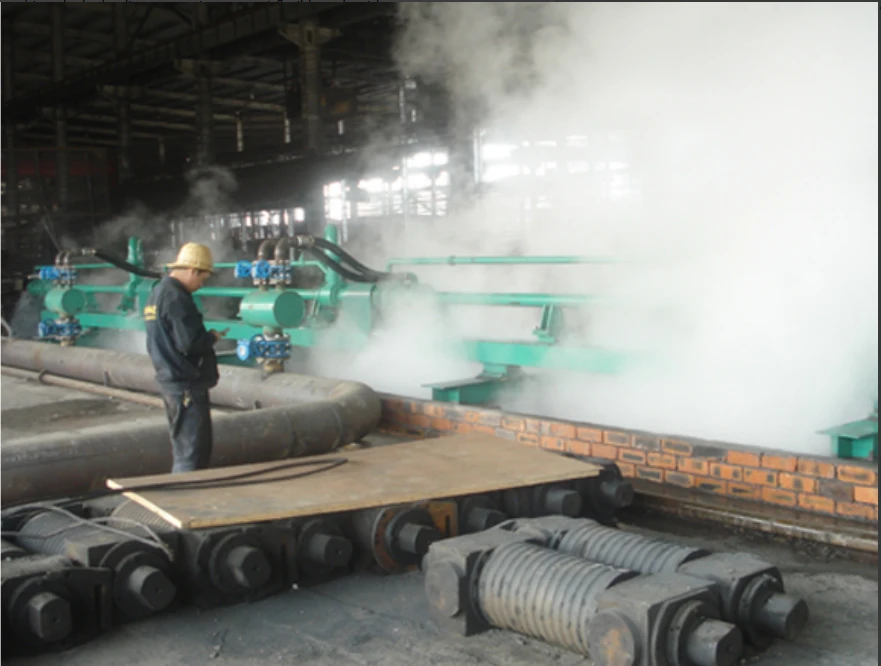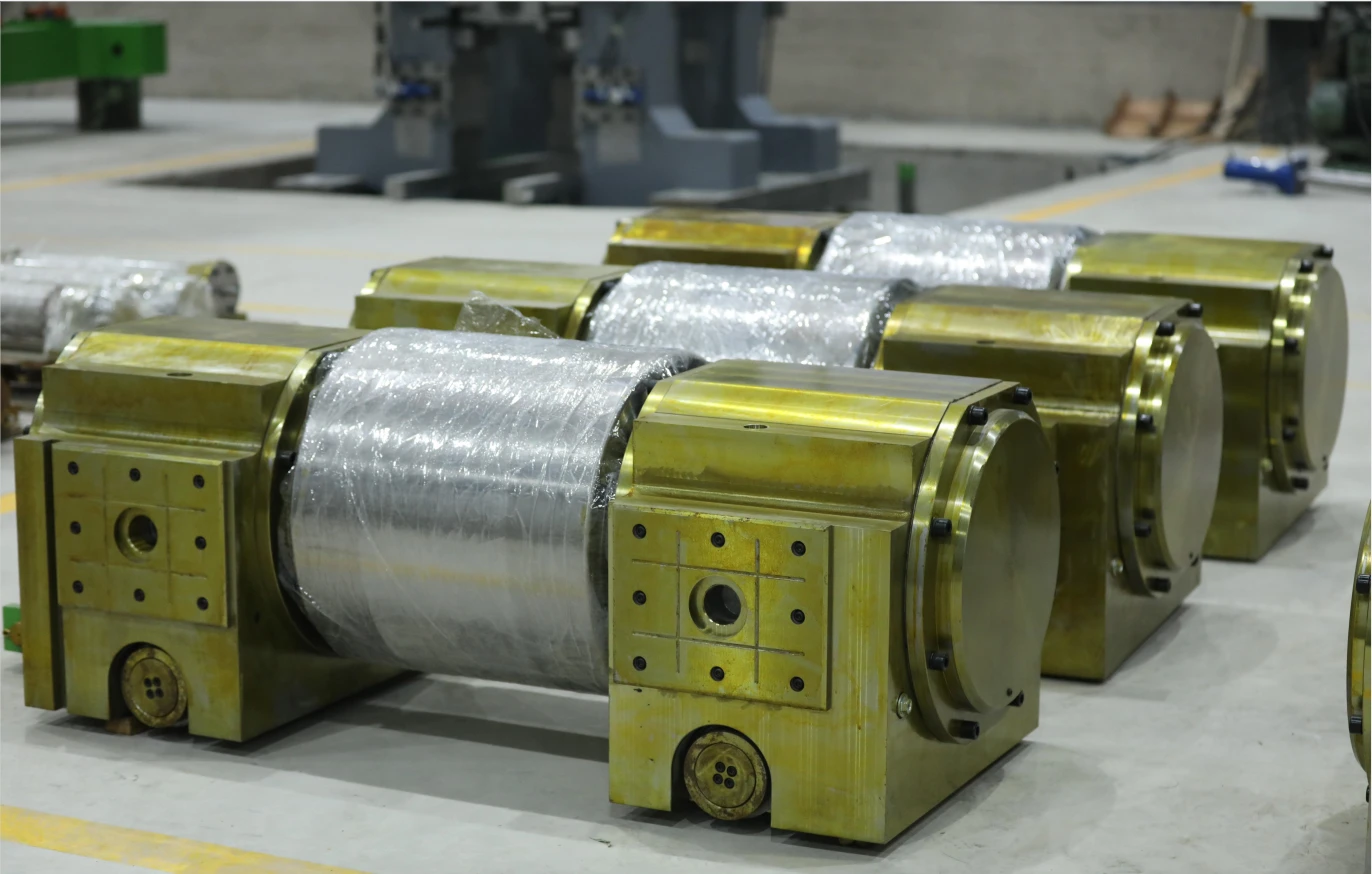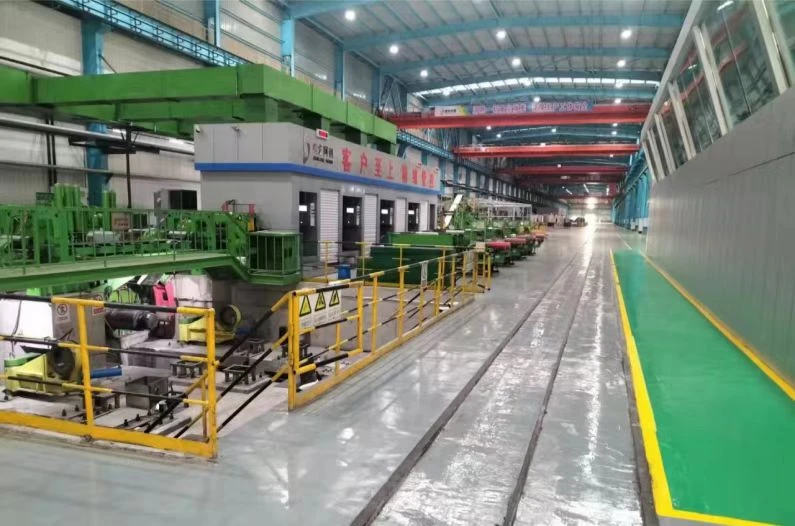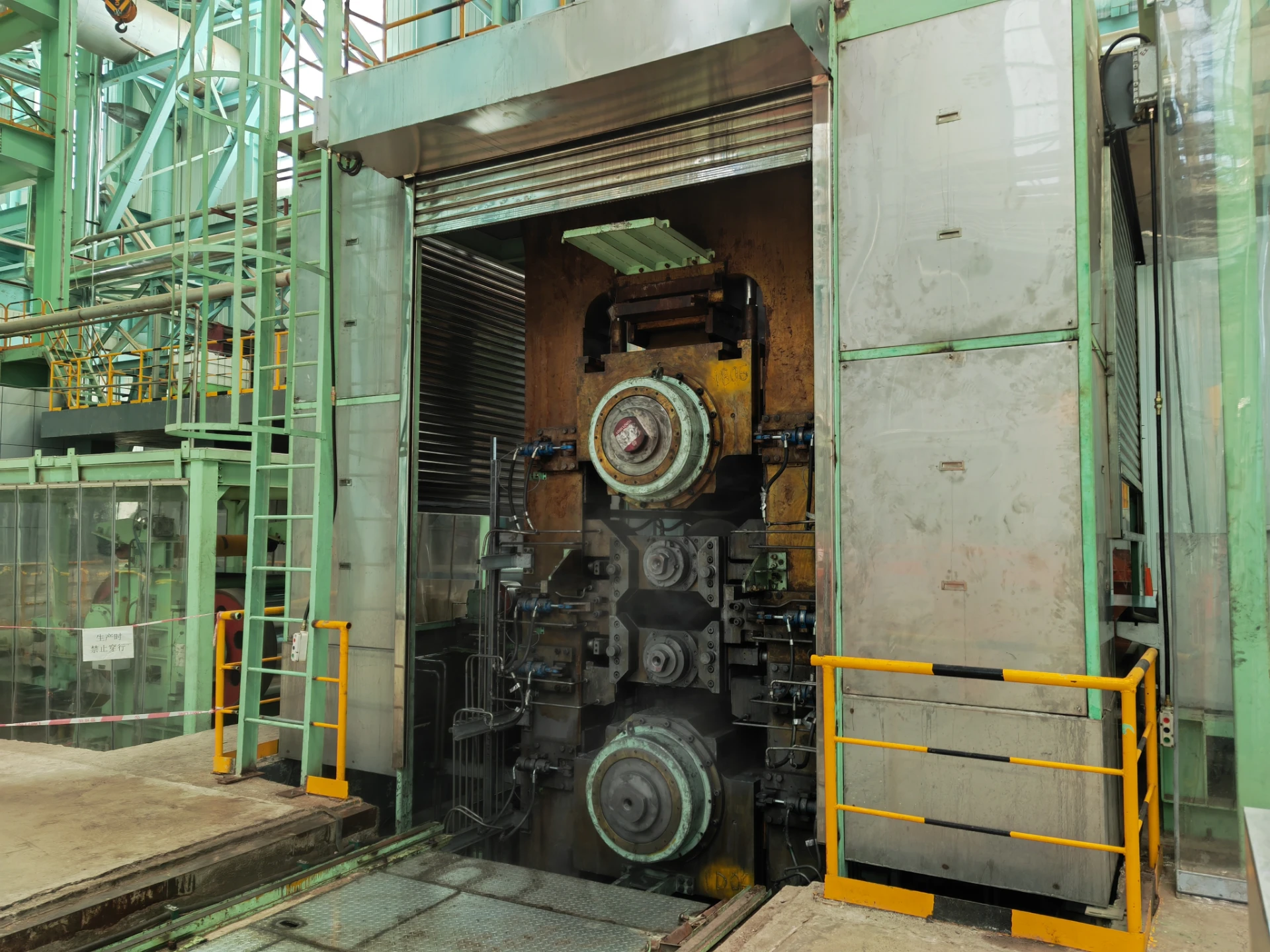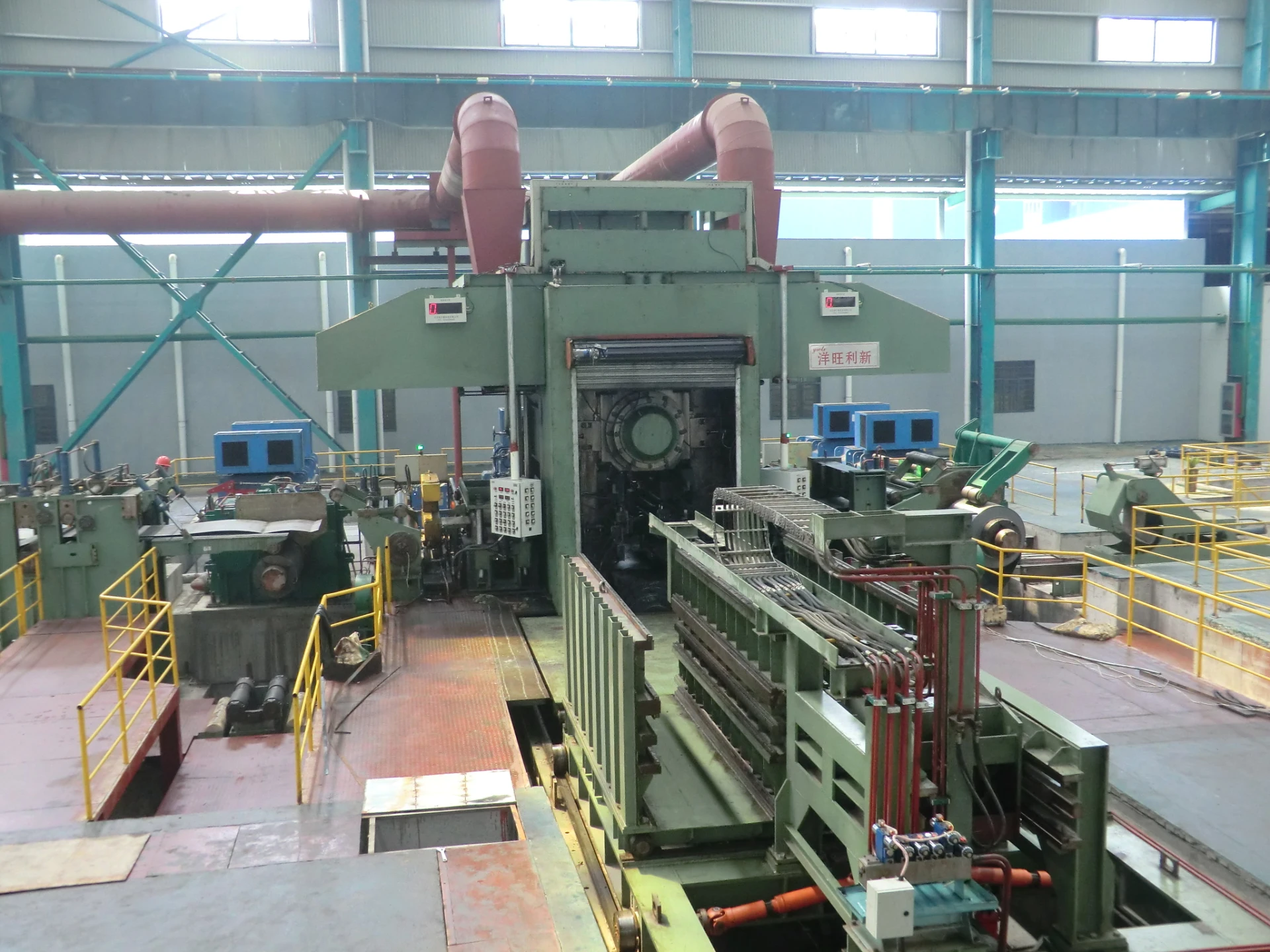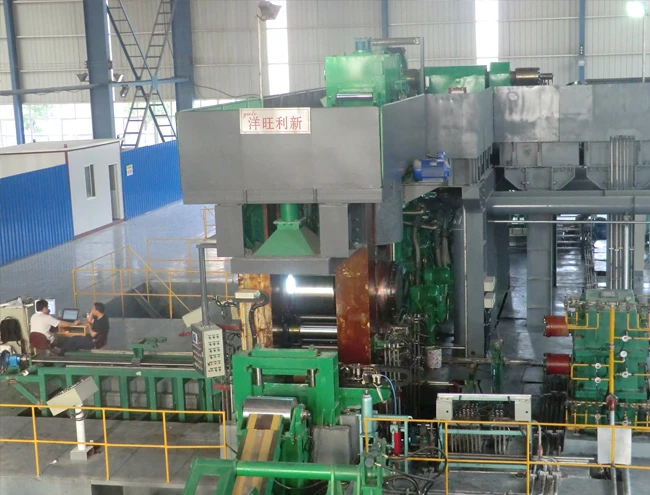
تأثیر دیجیتالی شدن و اتوماسیون در صنعت آسیاب Temper Pass
The steel industry, particularly in processes like temper rolling and temper pass mills, has been undergoing significant technological advancements. With increasing demands for precision and efficiency, the integration of digitalization and automation has revolutionized these processes. These innovations are transforming the temper mill steel industry, ensuring more efficient operations, improved product quality, and enhanced safety standards. In this article, we will explore how digital and automated systems are shaping the future of temper pass mills.

استقبال از اتوماسیون در فرآیند تمپر پاس
The temper pass mill is a critical component in the steel manufacturing process, used to refine and enhance the properties of steel sheets. Automation in the temper rolling process is helping to optimize the control of speed, tension, and temperature—three crucial elements in ensuring the steel's properties meet specific standards.
The integration of automated systems ensures continuous, real-time monitoring and adjustments, which results in consistent product quality. With automated sensors and feedback systems, operators can monitor the temper mill steel during processing, adjusting parameters on the fly to reduce human error. These advancements also improve production efficiency, reducing the need for manual intervention and enabling faster processing times.
مزیت کلیدی اتوماسیون در آسیاب های عبور مزاج توانایی دستیابی به نتایج برتر از نظر دقت است. سیستمهای خودکار تحملهای سختتر و خواص مواد یکنواختتر را امکانپذیر میکنند، که برای صنایعی مانند خودروسازی، که در آن فولاد سبک وزن و استحکام بالا مورد تقاضا است، ضروری است.
Digitalization in temper pass mills has been a game-changer, bringing more than just automation. The ability to collect, store, and analyze data has significantly improved the precision and efficiency of the temper rolling process. Advanced digital sensors and monitoring tools provide real-time insights into the entire production process. This allows for predictive maintenance, early detection of issues, and better decision-making.
In temper mill steel production, digitalization plays a pivotal role in tracking material properties such as hardness, surface quality, and thickness. These measurements are crucial for maintaining consistent quality, especially in industries requiring high-performance materials. By digitally mapping these attributes throughout the process, companies can optimize the tempering process to create steel with exact characteristics.
علاوه بر این، فنآوریهای دیجیتال یکپارچهسازی یکپارچه با سایر سیستمهای خودکار در کارخانه را امکانپذیر میسازد و امکان ایجاد یک محیط تولیدی مرتبطتر و مبتنی بر داده را فراهم میکند. اپراتورها میتوانند به داشبوردها و سیستمهای کنترلی دسترسی داشته باشند که بینشهایی را در مورد معیارهای عملکرد، موجودیها و برنامههای نگهداری، سادهسازی عملیات و کاهش زمان خرابی ارائه میدهند.
تعمیر و نگهداری پیش بینی و تجزیه و تحلیل داده ها در Temper Pass Mills
Predictive maintenance, powered by digital tools and automation, has emerged as a key application in temper pass mills. By leveraging sensors and data analytics, manufacturers can predict when a machine or component will need maintenance, preventing unplanned downtime and reducing repair costs. The combination of real-time data collection and predictive algorithms has significantly improved the longevity of equipment used in temper rolling and temper pass mill operations.
Through digitalization, temper mill steel manufacturers can collect data on machine performance and components' wear patterns, providing actionable insights. Machine learning models analyze this data to predict potential failures or areas of concern. As a result, companies can perform maintenance activities proactively, ensuring that machines operate at optimal efficiency, minimizing disruptions, and reducing operational costs.
سیستمهای نگهداری پیشبینیکننده همچنین میتوانند با شناسایی مسائل قبل از تبدیل شدن به مشکلات خطرناک یا پرهزینه، به بهبود ایمنی کمک کنند. با یکپارچهسازی این سیستمها، اپراتورها از نقصهای احتمالی آگاه میشوند و به آنها این فرصت را میدهند تا قبل از اینکه بر تولید تأثیر بگذارد، مشکل را حل کنند.
بهبود کیفیت فولاد با اتوماسیون و کنترل دیجیتال
The combination of automation and digitalization in temper pass mills has greatly improved the quality of the finished product. By using automated sensors, advanced algorithms, and real-time feedback, manufacturers can achieve more consistent and higher-quality temper mill steel. The key to this improvement lies in the ability to monitor and adjust the rolling parameters to the exact specifications required for various steel grades.
به عنوان مثال، در فرآیند نورد حرارتی، اعمال فشار، دما و سرعت ثابت برای دستیابی به خواص مکانیکی مطلوب فولاد ضروری است. اتوماسیون امکان کنترل دقیق بر روی این پارامترها را فراهم می کند و احتمال خطای انسانی را کاهش می دهد و اطمینان حاصل می کند که هر ورق فولادی تولید شده مطابق با استانداردهای کیفی مورد نیاز است.
ابزارهای دیجیتال همچنین امکان نظارت بر کیفیت سطح فولاد را فراهم می کنند و حتی کوچکترین نقص ها را در حین پردازش تشخیص می دهند. توانایی شناسایی و اصلاح این عیوب در زمان واقعی منجر به تولید محصولات فولادی با کیفیت بالاتری می شود که مطابق با مشخصات مشتری یا فراتر از آن است.
آینده کارخانههای Temper Pass Mills: مسیری به سوی تولید هوشمند
Looking ahead, the future of temper pass mills will be driven by even more advanced digital and automated technologies, paving the way for smart manufacturing. In the coming years, we can expect to see further developments in artificial intelligence (AI), machine learning, and the Internet of Things (IoT), all of which will enhance the capabilities of temper rolling and temper pass mill processes.
Temper mill steel production will become increasingly automated, with AI systems capable of making real-time adjustments to optimize the rolling process. These advancements will allow for the production of even higher-quality steel at faster rates and lower costs. Additionally, smart manufacturing will enable real-time collaboration between different machines in the production process, ensuring the smooth flow of materials and information across the entire factory floor.
The integration of digitalization and automation in temper pass mills is not just about improving efficiency; it is also about sustainability. The ability to optimize resource use, reduce waste, and minimize energy consumption will be critical in making steel production more environmentally friendly. As more manufacturers adopt these technologies, we can expect the industry to become both more efficient and more sustainable.
دگرگونی آسیابهای عبور مزاج از طریق فناوری
The integration of digitalization and automation into the temper pass mill process represents a significant advancement in steel manufacturing. These technologies have improved production efficiency, precision, and safety, while also enhancing the quality of temper mill steel. The rise of predictive maintenance, real-time data analytics, and smart manufacturing systems promises to further transform the industry, driving improvements in both productivity and sustainability.
As temper pass mills continue to evolve with new digital and automated technologies, manufacturers will be better equipped to meet the growing demands for high-quality steel across various industries, from automotive to construction. By embracing these innovations, companies can stay competitive in an increasingly globalized and fast-paced market.
-
Indian Clients Visit YWLX to Inspect Skin-pass MillاخبارJun.22,2025
-
Typical Products from Reversing Cold Rolling ProcessاخبارMay.26,2025
-
Surface Finish Improvement through Skin Pass RollingاخبارMay.26,2025
-
Integration of AGC Systems in Modern Cold Rolling MillsاخبارMay.26,2025
-
Cold Rolling in the Context of High-Strength Steel DemandاخبارMay.26,2025
-
AGC in Hot Rolling Mills: Challenges and SolutionsاخبارMay.26,2025
-
Why Reversing Cold Rolling Mills Are Ideal for Specialty MetalsاخبارMay.13,2025




